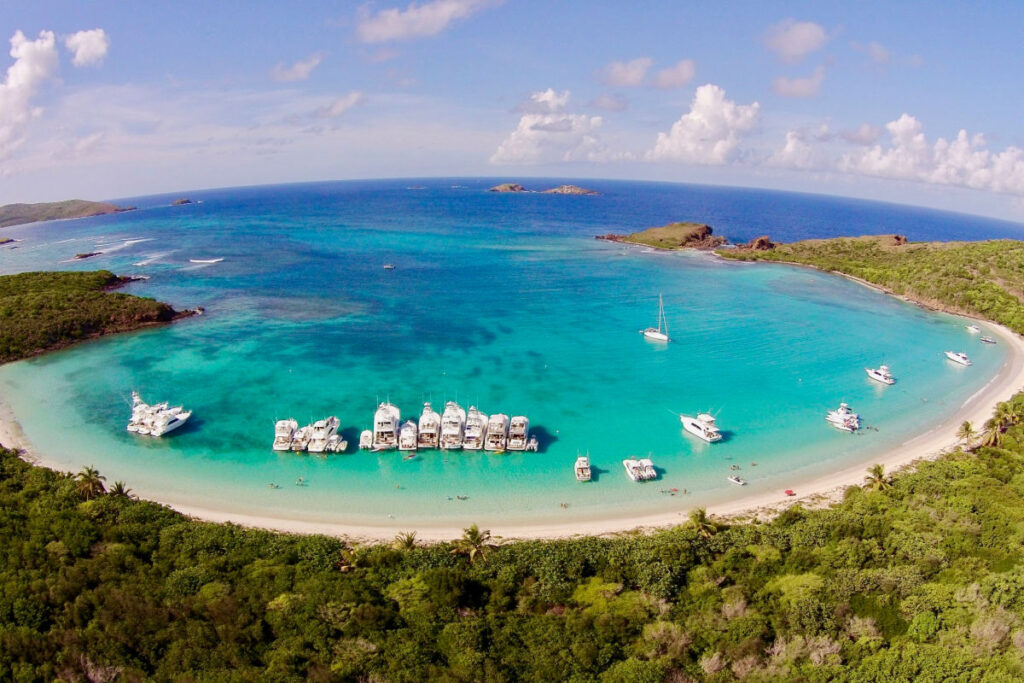No products in the cart.
Travel Guide
Why These Less-Traveled Caribbean Islands Should Be Your Next Beach Vacation Destination
While many travelers stick to the mainland when visiting Puerto Rico, there are actually over 100 islands, islets, and cays that are part of this beautiful archipelago. Many are uninhabited and completely overlooked by the typical tourist.
The islands of Culebra and Vieques aren’t entirely isolated – in fact, they are very easy to get to – but they are much less traveled than other parts of Puerto Rico, making them ideal for a secluded getaway.

Fondly dubbed the “Spanish Virgin Islands,” Culebra and Vieques are home to not only some of the best beaches in Puerto Rico, but some of the best beaches in the world.
Located only a few miles off the eastern coast of mainland Puerto Rico (6 miles to Vieques and 20 to Culebra), these islands are largely covered in wildlife reserves, and for that reason, are a perfect place for hiking, snorkeling, and diving.

What To Do in Culebra and Vieques
The most popular attractions in Culebra and Vieques are the world-renowned beaches and bioluminescent bays. There are also a lot of activities to do inside the sprawling wildlife reserves, including hiking, diving, snorkeling, bird-watching, and even spotting some wild horses! Here are some of the amazing ways you can spend your days on these spectacular islands.
Visit Some of the Best Beaches in the World
Culebra’s white-sand Flamenco Beach was named one of the top 25 beaches in the world by TripAdvisor. Its calm waves and crystal-clear waters make a great setting for enjoying a relaxing day or doing some snorkeling. The colorful graffiti-covered tanks that remain on the beach are a reminder of the island’s past as a naval base and a unique photo op.
Top 5 Travel Insurance Plans For 2023 Starting At $10 Per Week

Zoni and Tamarindo beaches are popular snorkeling and diving spots on Culebra, and you’re likely to see sea turtles or even manta rays. If you’re up for a challenge with a worthy reward, you can hike the rocky trail leading down to the secluded Resaca beach.
On Vieques, you’ll find the best of both worlds with pristine white beaches as well as a black sand beach, Playita Negra. Playa Esperanza and Sun Bay are known for their tranquil waters, and Pata Prieta, or “Secret Beach,” is yet another hidden gem where you can spend your day relaxing with little to no crowds.
Because most of the beaches on both islands are very secluded, the majority won’t have facilities of any kind. You’ll want to remember to bring everything you need, including water, food, and something to protect yourself from the sun – and then, of course, pack everything out when you leave.

Kayak Amongst Bioluminescent Phytoplankton
Aside from its incredible beaches, the top point of interest on Vieques is Mosquito Bay. This area was actually recognized by the Guinness Book of World Records as the brightest bioluminescent bay in the world.
Visitors can take a tour in a clear-bottomed kayak through the bay and watch as the water glows blue when touched. For an even better experience, it’s suggested to visit during a new moon. This, combined with the lack of light pollution here, will allow you to see the phytoplankton at their brightest.

Island Hop To Nearby Islands
Many smaller, uninhabited islands surround Vieques and Culebra, including Isla Culebrita and other cays. You can easily spend a day island hopping to some incredible, untouched islets for even more remote and tranquil beaches. These cays are also the perfect spot for snorkeling and diving amongst undisturbed marine life. You can get to these hidden locations by water taxi, charter boat, or even kayak.

Explore The Island’s Nature By Jeep
Wildlife reserves cover a large portion of both islands. In fact, the Vieques National Wildlife Reserve includes 20,000 acres of protected land and nine nautical miles of a marine reserve. One of the best ways to explore the remote parts of the island is to rent a Jeep, scooter, or even golf cart.
This will allow you to beach hop, find remote hiking trails, discover the island’s hidden gems, and likely come across some of the island’s many wild horses.

How To Get There
Getting to Culebra and Vieques is relatively easy. Both are accessible by small plane, with flights leaving several times a day from San Juan (Isla Grande airport and SJU). The flights are only around 25-35 minutes, depending on which island you’re going to, and cost around $100.
Ferries are the more economical option, although not quite as convenient. Ferries depart from the small town of Ceiba on the eastern coast, which is about 40 minutes from San Juan. The trip is 30-45 minutes, and tickets for either island will only put you out $2-$4. Although ferries leave several times a day, they can get busy, so it’s recommended to buy your ticket in advance.
Traveler Alert: Don’t Forget Travel Insurance For Your Next Trip!
↓ Join Our Community ↓
The Travel Off Path Community FB group has all the latest reopening news, conversations, and Q&A’s happening daily!

SUBSCRIBE TO OUR LATEST POSTS
Enter your email address to subscribe to Travel Off Path’s latest breaking travel news, straight to your inbox
This article originally appeared on TravelOffPath.com
Source link

